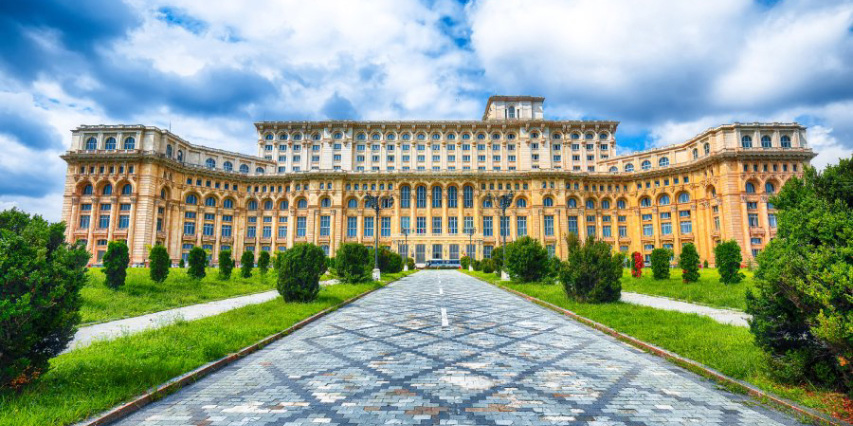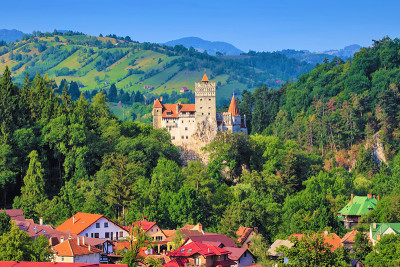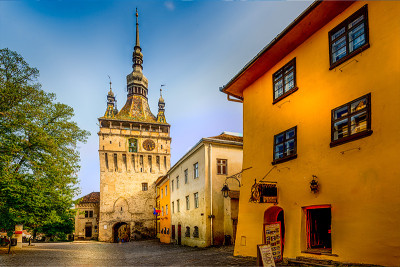Quick, think for a moment: what’s the most impressive building that you have ever stepped foot in? Notre Dame? The Taj Mahal? The Great Mosque of Mecca? Although the list of beautiful, large, and amazing buildings that there are in this world is endless, the list of the biggest buildings in the world are short. And if you are looking at the list of heavy buildings, there is one that tops all else: The Palace of the Parliament. Located in Bucharest, Romania, this has been verified by the Guinness Book of World Records to be the heaviest building in the world. And weighing in at 9.0356 x 109 pounds, it is unlikely that there will be a heavier building ever, or at least not anytime soon!
What Is The Palace Of The Parliament?
If you are unfamiliar with this building, or even if you are familiar only with the name, you might be wondering, what exactly is the function of this building? Today it is a simple administrative building. It is the second largest administrative building, second on to the Pentagon. You can enter only through a guided tour, and it is a good idea to book tickets ahead of time. You will also need to bring your passport to be able to tour the building. The tour will last about 45 minutes.
What Makes The Palace Of The Parliament So Heavy?
First, what makes it heavy is the sheer size of the building. It takes up a total of 365,000 square meters, or 3,930,000 square feet. But even though the Pentagon is significantly larger in size (the Pentagon is nearly double the square footage: 6,500,000 square feet!), what makes the Palace of the Parliament the heaviest building in the world is the materials used for its construction. The building is made out of 700,000 tons of steel and bronze, 350,000 square meters of marble, 3500 tons of crystal and 900,000 square meters of wood. Many have described this as a monstrosity of a building.
What Is The History Of The Palace Of The Parliament?
Nicolae Ceaușescu was a Romanian communist politician and leader, serving as the leader of Romania from 1965-1989. He was a totalitarian leader and was considered to be one of the most repressive of the Eastern Bloc of that time. He had secret police spying on his own citizens and he did not know how to handle the country’s finances, leading to a lot of trouble for Romania.
In 1977 the Vrancea earthquake hit Romania and destroyed parts of Bucharest. Ceaușescu seized this opportunity to create a reconstruction plan for Bucharest. Having visited East Asia just a few years earlier in 1971, he was impressed by the societal organization in North Korea’s Juche ideology. He wanted to further develop Romania and put out a grandiose image to the world. After the earthquake, Ceaușescu had parts of old Bucharest destroyed and started designing a new Bucharest in socialist realism style. Socialist realism was an extremely idealized but realistic art form developed in the Soviet Union beginning in 1932. After World War II it was adopted by other socialist and communist countries.
During this time, Ceaușescu came up with what he called “Project Bucharest.” What he was looking for was a replica of Pyonyang in North Korea (if you look up pictures, you can note the similarities between the Kumsusan Palace of the Sun in North Korea’s capital and the Palace of the Parliament – the two buildings are quite alike). Ceaușescu created a nation-wide contest to find just the right architect for the job. He found a young, 28-year-old woman named Anca Petrescu for the job. She was chief architect, leading a team of 10 architects, who had another 700 architects under them. Construction began June 25, 1984.
When construction began, a total of 2.7 square miles (or 7 square kilometers) was demolished in the old city center of Bucharest. 40,000 people had to be relocated, and this work was forcibly carried out by soldiers to keep costs low. It is estimated that between 20,000 and 100,000 people ended up working on this grand Palace. They rotated between three shifts and there was a large number of “volunteers” who helped with the project. Thousands of people died during the construction – it is estimated that this project took the lives of nearly 3,000 people.
Unfortunately for Ceaușescu, he was never able to see the completion of this building. With the fall of communism in 1989, Ceaușescu was condemned to death and died on Christmas day. The building was not completed until 1997. Still, in 1990 Rupert Murdoch, the Australian-born business magnate, offered to buy the building for $1 billion. His bid was rejected, and in 2008 the Palace of the Parliament was estimated to be worth $3.4 billion (or 3 billion euros). This makes the Palace of the Parliament not only the heaviest building in the world, but also the most expensive administrative building. Even just the heating and electric costs $6 million, which is the amount that it costs to power a medium-sized city!
The interior of the Palace is quite ornate, with all the marble, and is divided into 23 sections. It is home to Romania’s two houses of Parliament (the Senate and the Chamber of Deputies), and an international conference center. It also has three museums: the National Museum of Contemporary art, the Museum of Communist Totalitarianism, and the Museum of the Palace. Many large events are held in this building, not just ones put on by Romanians but also by international bodies. The building hosts symposia, conferences, and others. Even with everything that goes on in this building, a whopping 70% of it goes unused. With rooms left completely empty.
The Palace of the Parliament is definitely worth a visit! It is beautiful, but it is also monstrous – not just in looks, but in its history too. Good luck getting a picture of this building – it is so big you have to be pretty far away to capture the entire thing in one frame!

 ES
ES
 IT
IT
 DE
DE
 FR
FR


